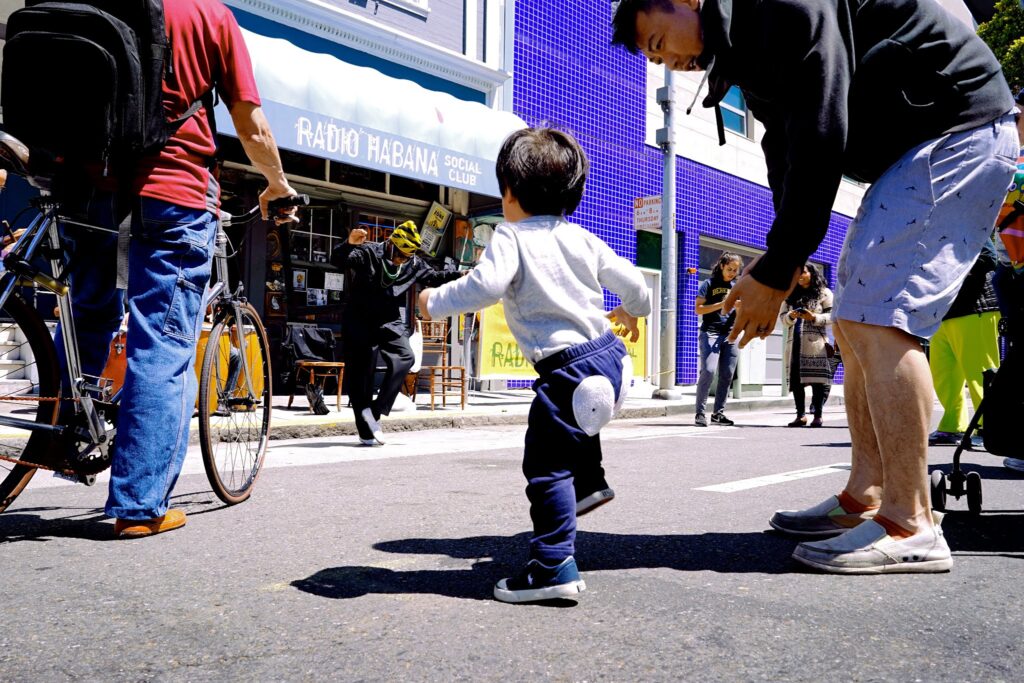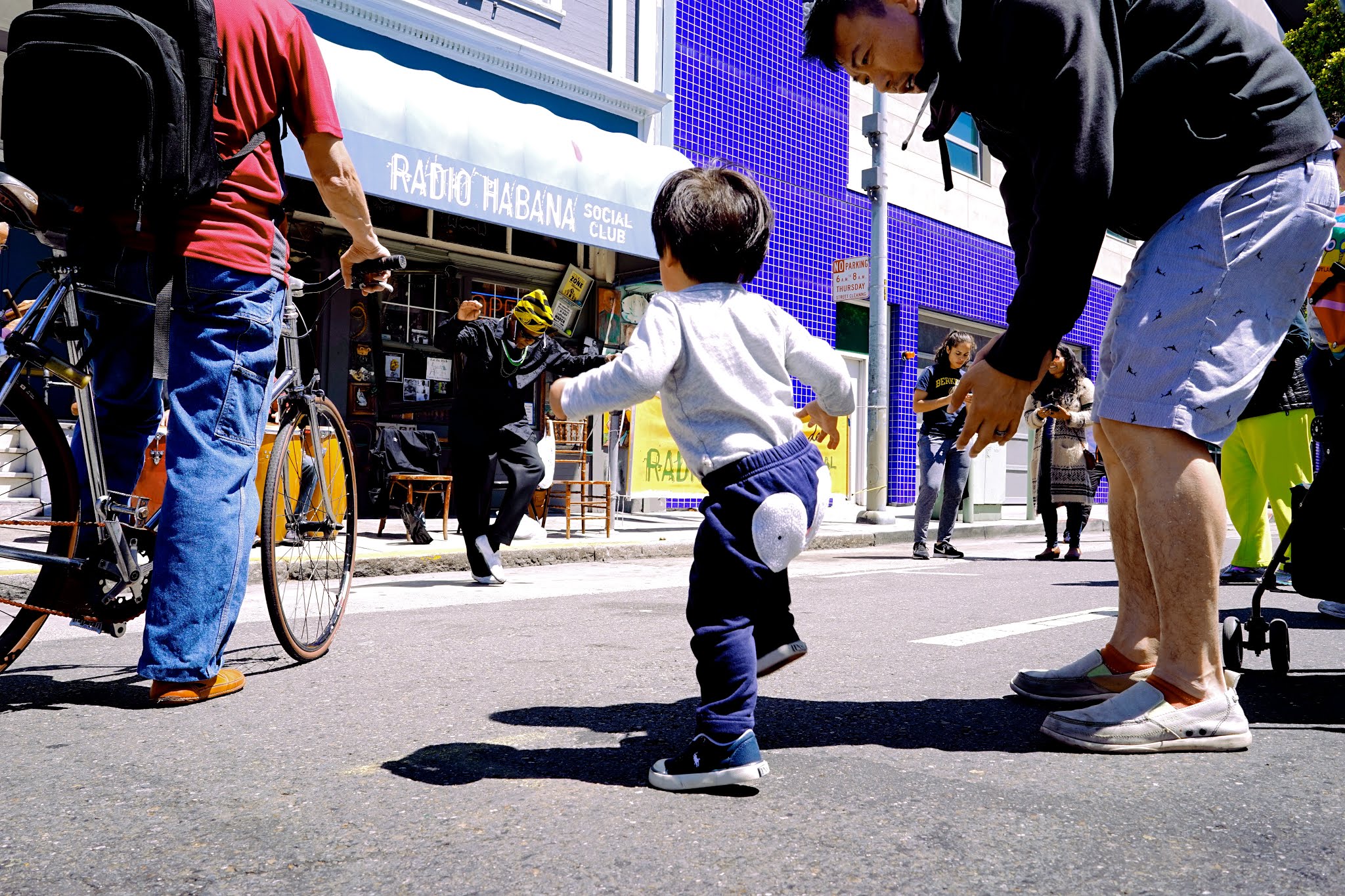
By Marynoel Strope
Last month, the Mission’s Borderlands Cafe announced their impending closure. Though there are plenty of coffee shops nearby, the loss of the business struck a chord with the community.
“We’re kind of a cafe designed for Valencia Street in 2010, not Valencia Street in 2020,” owner Alan Beatts told Mission Local of the spot, the type of coffee shop that specializes not in high-end pour-overs or artisanal snacks, but a comfortable, welcoming atmosphere
Customers who mourn the loss of a small business like Borderlands aren’t just going to miss what what the business sells, but the place itself. Local spots can serve as gathering places, as social outlets, as places to get advice and learn – both about the products and the goings-on of the neighborhood.
“It’s a well-lit place with tables where you can work, talk to friends, and play board games while enjoying coffee and a bagel,” Beatts said.
They don’t have to be businesses – they can be houses of worship, community centers, libraries or public parks. They’re wherever people, meet, socialize, and spend time together, are accessible and either low-cost or free.
The Third Place
“Third places” occupy a unique, critical space, existing separately from the home (the “first place”) and the workplace (the “second place”). The term was coined by urban sociologist Ray Oldenburg in 1989, who saw how increasing privatization and commercialization of public spaces eroded not only these institutions, but the democracy and social cohesion they foster.
As we saw in Creating Resilience: How Block Parties Can Prepare Us for Disaster, communities that have access to these third spaces are more likely to survive a disaster. The residents of Auburn Gresham – the Chicago neighborhood that saw much better survival rates following a major heat wave in 1995 – “participated in block clubs and church groups, in addition to socializing at grocery stores and diners, which many other neighborhoods lacked.”
Creating the Most Equity: Free Third Places
These are the most accessible, equitable third places: free libraries, plazas, community centers and parks. But increasing privatization means that management of these spaces is also shifting from public to private.
Libraries, besides providing free access to information, “offer things like companionship for older adults, de facto child care for busy parents, language instruction for immigrants and welcoming public spaces for the poor, the homeless and young people.” Churches, both through their service as well as hosting events like potlucks, picnics and dances, create social equity and refuge.
In San Francisco, the Downtown Plan requires that large developments provide public space. These POPOs (privately owned public spaces) are open limited hours and often located on rooftops or plazas within fancy office buildings. While ostensibly public, most POPOs feel private and exclusive.
“In the absence of informal public life, living becomes more expensive. Where the means and facilities for relaxation and leisure are not publicly shared, they become the objects of private ownership and consumption.”
Sidewalks and streets are the original third places. Before cars, they were truly public, where children could play, vendors could sell and people were free to gather and meet. As cars encroached, the government created public parks to provide open space. Today, sometimes the sidewalk is the only option for a free, public space, especially for the San Francisco’s growing number of homeless people. But residents are shuffled off of sidewalks too, further eroding a sense of place for the most vulnerable.
What’s more, the maintenance of public parks, sidewalks and plazas are often turned over to private entities like community benefit organizations (CBOs). These entities may over-manage the spaces, exclude activities like picnics and gatherings, and limit the hours they are open. While most libraries are government-run, federal funding for these public benefits is declining.
The Value of Low-Cost Third Places
The other type of third place is a business – generally, a small business, with a low barrier to entry, affordable prices and a comfortable atmosphere. As a for-profit entity, these third places may exclude some people, especially those who cannot spend money. Access to these spaces help decrease loneliness, connect people with their community and provide space for people to work, create and socialize.
Coffee houses and saloons, in particular, fostered democracy, and even revolution. Bars and clubs have long histories of providing sanctuary, culture and sense of place, especially for LGBTQ people, as well as incubating arts and music scenes.
Even McDonalds, with its low barrier to entry, inexpensive menu and space to socialize, have become important places for people, especially seniors, to gather.
As the American retail landscape shifts for brick-and-mortar businesses – with competition from the Internet, massive income inequality, corporate dominance and unsustainable costs-of-living – the option of opening a business with room for people to just hang out dwindles. Borderlands cited a lack not only have customers but employees, as gentrification makes it impossible for people to survive on low or middle-income jobs. Vacant storefronts have replaced many third places driven out by rent increases.
The Third Place in San Francisco Today
In San Francisco, we’ve felt loss after loss of many longtime institutions. Funky coffee shops with mismatched chairs and room to spread out have given way to what feel like high-end work spaces, with $5 coffees and professional, laptop-clicking clientele. Coworking spaces provide an alternative to working from home in isolation, but they are still workplaces customers must pay to use, not third places with options for leisure.
“Life without community has produced, for many, a life style consisting mainly of a home-to-work-and-back-again shuttle. Social well-being and psychological health depend upon community. It is no coincidence that the ‘helping professions’ became a major industry in the United States as suburban planning helped destroy local public life and the community support it once lent.”
As our lives increasingly center around the workplace, our identities as professionals (or not), and our earning potential, so do the businesses that can exist in our society.
From queer bars like the Lexington Club to Estra Noche, dozens of bookstores, including the country’s oldest Black bookstore Marcus Books moving to Oakland, to the loss of Homeless Youth Alliance’s Haight Street drop-in center and displacement of other nonprofits, it’s a tough time for third places in San Francisco.
Empty storefronts, giant towers and exclusive, high-end businesses tend to keep people out of public spaces, eroding the social fabric these places create. Livable City’s work to preserve small business and create a walkable San Francisco isn’t just about ensuring access to amenities, but envisioning a complete, accessible city for all residents, whether they have money to spend or not.
Whether the city can preserve the third places that already exist and help foster the creation of new ones will be an important measure of the city’s health in years to come.




